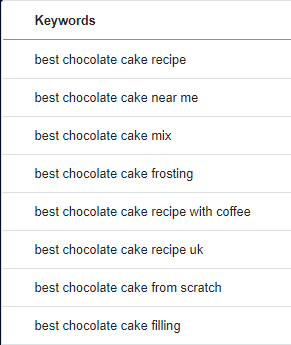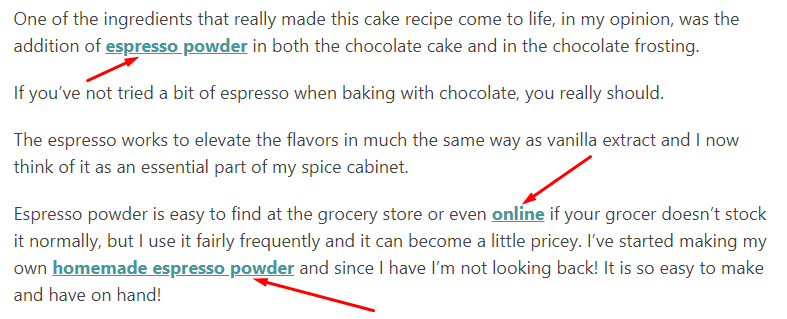On-Page SEO Activities: 8 On-Page SEO Techniques to Use
Did you know that 95% of search traffic goes to the first page of search results? If you want people to find your business in search results, you need to optimize your pages. On-page search engine optimization (SEO) is fundamental to helping more qualified leads find your business when they search.
In this blog post, you’ll learn eight techniques you can use to improve your site’s on-page SEO, including:
- Integrate relevant keywords into your pages
- Optimize your title tag and meta description
- Create user-friendly content
- Optimize images
- Optimize your URLs
- Use internal links on your pages
- Improve site load time
- Add responsive design to your website
Keep reading to learn more about these on-page SEO activities!
P.S. Want to see where your on-page SEO currently stands? Use our free SEO checker to get your report in 60 seconds!
WebFX SEO Checker


On-page SEO activity #1: Integrate relevant keywords into your pages
First on our list of on-page SEO activities is integrating relevant keywords into your pages. If you want to rank in search results, you need to incorporate keywords into your website.
Keywords trigger your site to appear in relevant searches, so you need to optimize your pages to appear in the right search results.
To find the right keywords, start by conducting keyword research. You can use keyword research tools, like KeywordsFX, to help you find relevant terms for your pages.
When you conduct keyword research, focus on long-tail keywords. Long-tail keywords contain three or more words, like “best chocolate cake.”

Long-tail keywords are best for your website because they help you drive more qualified traffic to your page. When someone searches a specific term, the search intent is more precise, and you know what they want to find.
For example, if someone searches “chocolate,” it’s hard to know the intent behind that search. Are they looking for chocolate cake recipes, chocolate bars, or chocolate ice cream? The keyword is too short for you to identify the search intent behind it clearly.
On the other hand, a keyword like “chocolate cake recipe” is clearer. You know someone’s looking for a chocolate cake recipe — the search intent is evident.
Once you have your long-tail keywords selected, you’ll integrate them into your site. Don’t incorporate them too often, as it will lead to keyword stuffing. Keyword stuffing negatively impacts your site and hurts your ranking, so only use keywords where they fit and flow naturally.
On-page SEO activity #2: Optimize your title tag and meta description
Next on our list of on-page optimization strategies is optimizing your title tag and meta description.
Your title tag appears as a blue line of text in search results that people can click on to navigate to the page on your site. Users and search engines use this to determine if your listing is relevant to their search query.

Your meta description is the small blurb that appears below the title tag. This tag provides your audience with a summary of your page. While it doesn’t directly impact your ranking, your meta description can help guide people to choose your listing.

This tactic is one of the most crucial on-page SEO techniques because it impacts whether people click on your listing. If your title tag and meta description are detailed, people are more likely to click on your listing if it fits what your audience wants to find.
To have a click-worthy title tag…
- Stay within the 60-character limit
- Use your keyword towards the front of your tag
- Use power words (i.e., Exclusive, Free)
To have a compelling meta description…
- Stay within the 155-character limit
- Summarize what people can find on your page
- Use your core keyword in your description
On-page SEO activity #3: Create user-friendly content
If you want to know how to do on-page SEO, start by creating user-friendly content. Content marketing is a fundamental part of SEO because it’s what drives people to visit your pages. People discover your business in search results through the content you create, while optimizing your content through SEO enables it to rank in search.
A big part of getting your content to rank in search results is making it user-friendly for your audience.
Many companies make the mistake of writing their content to appeal to search engines to get it to rank. However, search engines have advanced far enough to understand how to rank pages based on how users engage with the content.
If you want your pages to rank, you need to create content for users, not search engines.
You can do this by:
- Breaking your content up with headings to make it easy to skim
- Using bulleted lists to find important information fast
- Adding visuals to break up text on your page
- Limiting the use of jargon
By following these best practices, you can create content that provides your audience with a positive experience and keeps them engaged with your content.
On-page SEO activity #4: Optimize images
Next on our list of on-page SEO activities is optimizing images. Visuals are a vital component to providing a positive user experience on your site. They help enhance your pages and make them visually engaging for your audience.
If your images aren’t optimized, however, they can be detrimental to your SEO. So, to ensure your photos work for your SEO, follow these two best practices:
- Optimize your image file sizes: If your image file sizes are too big, they slow down your site, which negatively impacts your SEO. To prevent this from happening, you can use an image compression tool like io to compress image file sizes.
- Use image alt tags: Since Google can’t read images, you need to add image alt tags to help search engines “read” them. These tags offer a short descriptive blurb about your image. These tags are also helpful if your pictures don’t load or if someone uses a screen reader.

On-page SEO activity #5: Optimize your URLs
Next on our list of on-page SEO activities is optimizing your URLs. Search engines use URLs to determine the relevancy of your page. If you want to help your page rank in more relevant search results, you’ll want to optimize your URLs.
When you don’t have a clear URL, it makes it difficult for users and search engines to understand your page’s context. So, imagine seeing a URL that looks like this:
www.baker.com/fnsj/ejnf-een3234/4392jnr392
If you saw this URL, would you have any idea about the context of the page? The assortment of random numbers and letters doesn’t tell you, or search engines, what’s on the page.
With an optimized URL, however, you provide context. Now, imagine seeing this URL:
www.baker.com/recipes/cakes/chocolate-fudge-cake
When looking at this URL, you know the page’s context and what to expect from it.
So, as you can see, optimizing your URL is fundamental to helping search engines and users understand the relevancy of your page.
When you optimize your URLs, make sure you use your page’s core keyword within the URL’s end portion. Additionally, you’ll want to ensure you’re using breadcrumb navigation to ensure your pages are organized and, therefore, produce a logical URL path.
On-page SEO activity #6: Use internal links on your page
When you learn how to do on-page SEO, you’ll often hear people talk about incorporating internal links. Internal links are links on your page to other pages on your site.
Internal links are a fundamental part of SEO for two reasons:
- Internal links help search engines discover new pages on your site and index them in search results to rank
- Internal links help keep users on your site longer

When you use internal links on your page, you want to ensure you create relevant anchor text for those links.
For example, let’s say you write a blog post about making a chocolate cake. You mention that there are different types of chocolate you can use to make the cake. You have a previous blog post you made where you discussed the best types of chocolate for baking.
When you craft your blog post, your anchor text might look like the bolded section below:
“There are many different types of chocolate you can use to make this cake — the best one to use depends upon the richness and flavor you’re looking for in your cake.”
On-page SEO activity #7: Improve site load time
One of the most important on-page SEO activities involves improving site load time. Users expect your site to load in three seconds or less. If your site loads too slowly, your audience will bounce back to the search results and visit another site instead.
When people bounce from your site, it tells search engines that your site is not relevant to the search results. Search engines then won’t rank your site as highly.
To prevent this from happening, you can use a tool like Google PageSpeed Insights to help you see your site’s current load time and improve it.
Google will provide suggestions like:
- Compressing image file sizes
- Minifying coding
- Reducing redirects
- Leveraging browser caching
- Using a content distribution network
If you aren’t sure how to implement optimizations, you can always invest in page speed services to have professionals optimize your site for you.
On-page SEO activity #8: Add responsive design to your website
Last on our list of on-page SEO techniques is integrating responsive design. People will access your site from mobile devices, like smartphones and tablets. If your website isn’t optimized for these devices, you risk delivering a poor mobile experience.
A poor mobile experience is detrimental to your SEO because Google operates on a mobile-first index — Google takes the mobile version of your site into account when ranking you in search results. If you don’t have a mobile-friendly site, you won’t rank well in search results.
Responsive design can help you deliver a mobile-friendly site for your visitors. It enables your site to adapt to whatever device your audience uses to have a positive experience.
Get started with these on-page SEO activities today
After seeing all these on-page SEO activities, you’ve got a big to-do list ahead of you. If you’re feeling overwhelmed with everything you need to do, WebFX is here to help. We have a team of over 250 experts ready to help you optimize your site for search engines.
We know how to construct SEO campaigns that drive results. In the past five years alone, we’ve driven over 6.3 million leads and over $2.4 billion in sales. You can count on our team of experts to help you create a custom SEO strategy that enables your business to grow online.
Ready to get started? Contact us online or call us today at 888-601-5359 to speak with a strategist about our SEO services!